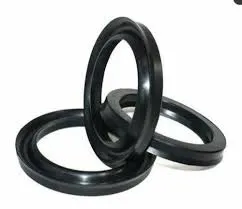9 月 . 27, 2024 06:10 Back to list
Understanding the Importance of Hub Oil Seals in Vehicle Performance and Maintenance
Understanding Hub Oil Seals Essential Components for Vehicle Longevity
Hub oil seals play a critical role in maintaining the integrity and performance of various vehicles, especially in automobiles and heavy machinery. These essential components are designed to prevent the leakage of lubricating oils, which are crucial for the smooth operation of rotating parts within the wheel hub assembly. In this article, we will explore the function, design, and importance of hub oil seals in extending the lifespan of vehicles.
Function of Hub Oil Seals
At its core, the primary function of a hub oil seal is to create a barrier that keeps the lubricating oil contained within the wheel hub, while simultaneously preventing contaminants such as dirt, dust, and water from entering the assembly. The seal is located at the junction where the hub and the axle meet, ensuring that the lubricating oil stays in place to sufficiently lubricate bearings and other components, thus minimizing friction and wear. By maintaining the proper lubrication, hub oil seals contribute significantly to the overall efficiency and performance of the vehicle.
Design and Materials
Hub oil seals come in various designs, but they typically feature a flexible rubber or polymer outer surface that's intended to compress tightly against the shaft, forming an effective seal. The inner edge often contains a spring mechanism that helps maintain contact pressure between the seal and the shaft. This design not only ensures a secure seal but also adapts to any minor movements of the shaft during operation.
hub oil seal

The materials used in manufacturing hub oil seals are crucial for their effectiveness. Commonly employed materials include nitrile rubber, fluorocarbon rubber, and polyurethane, each offering various levels of resistance to temperature fluctuations, chemical exposure, and wear. The selection of the right material is vital to ensure a long-lasting seal that can withstand the specific operating conditions of the vehicle.
Importance of Regular Inspection and Maintenance
Given their integral role, regular inspection and maintenance of hub oil seals are essential. Over time, seals can wear out due to factors such as heat, friction, and exposure to contaminants. A compromised seal can lead to oil leakage, resulting in insufficient lubrication and potential damage to bearings and other components. As a result, vehicle owners should be proactive in checking for signs of wear, such as oil spots underneath the vehicle or unusual noises during operation.
Conclusion
In summary, hub oil seals are fundamental components that ensure the efficient functioning of vehicle wheel hubs by preventing oil leakage and protecting internal parts from external contaminants. Their design and the materials used are key to their performance and longevity. By prioritizing the maintenance and replacement of these seals, vehicle owners can enhance the reliability and lifespan of their vehicles, ultimately leading to safer and more economical driving experiences. Whether in personal automobiles or commercial vehicles, understanding the importance of hub oil seals can make a significant difference in vehicle maintenance strategies.